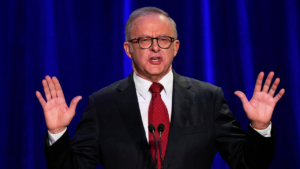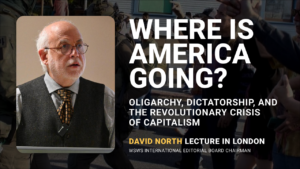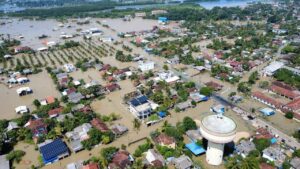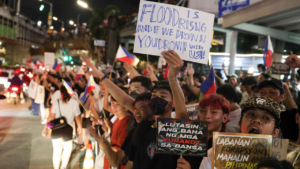By Sanjaya Jayasekera.
We publish here Part 1 of a series examining the global wave of Gen Z protests, the deepening crisis of revolutionary leadership, and the necessity of fighting for the program of socialist internationalism on the basis of Leon Trotsky’s Theory of Permanent Revolution.
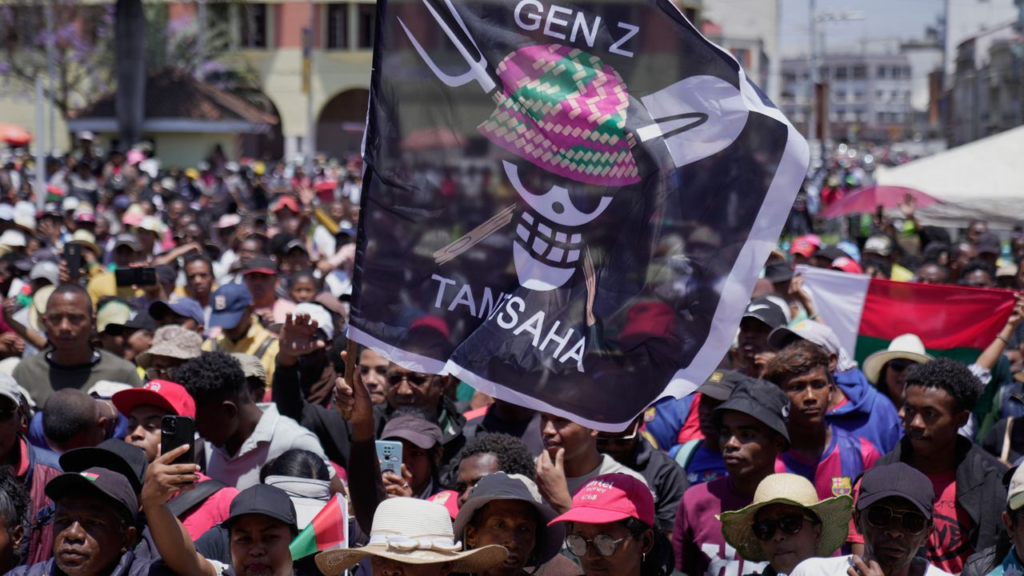
From the streets of Dhaka to Nairobi, from Colombo to Kathmandu, from Manila to every corner of the former colonial world—from Morocco to Peru, from Madagascar onward—a wave of youth-led uprisings has shaken the global capitalist order between 2022 and 2025. These movements have captured global attention with their scale, militancy, and apparent spontaneity. In September 2024, in Bangladesh, millions, predominantly angry youth, marched demanding the resignation of Prime Minister Sheikh Hasina1. In Kenya, the largest and most sustained protest movement since its Independence from colonial Britain took place from June 20242 to last month, where Generation Z (Gen-Z) protesters stormed parliament and brought President William Ruto’s government to the brink of collapse over his proposed austerity law. Sri Lanka’s youth occupation of Galle Face Green in July 2022 forced President Gotabaya Rajapakse to flee the country. Nepal saw its government toppled amid deadly street battles last September. Last month, the Philippines witnessed its largest demonstrations in two decades, while, on October 14, Madagascar President Andry Rajoelina was toppled following a mass popular mobilization and subsequent military intervention. These movements unfolded alongside hundreds of mass demonstrations—mobilizing millions across Europe and around the globe—against Zionist Israel’s genocide in Gaza, against the Trump administration’s preparations for a presidential dictatorship in the United States, and against the growing belligerency of imperialism around the world.
In Bangladesh, the military installed Muhammad Yunus, a banker with close ties to Western imperialism, who immediately announced “robust and far-reaching economic reforms”—a transparent code for savage International Monetary Fund austerity. In Kenya, late opposition leader Raila Odinga, who had postured as champion of the masses, joined hands with Ruto’s government to implement the identical policies the protests opposed, while the country was designated a US “major non-NATO ally”. Sri Lanka’s uprising delivered power to Ranil Wickremesinghe, a pro-IMF stooge who ruthlessly enforced austerity using police-state repression. Nepal’s protests were exploited by the military to install a technocratic interim government headed by former Chief Justice Sushila Karki, sidelining all political parties while maintaining capitalist rule.
For the millions of youth who risked their lives in these struggles, the outcomes represent devastating betrayals. The fundamental questions facing the working class and the oppressed masses remain unresolved: How can youth secure jobs, education, and a decent future? How can democratic rights be defended against increasingly authoritarian regimes? How can the stranglehold of imperialist finance capital be broken? Most urgently, as the United States and NATO prepare for catastrophic wars against Russia and China, how can the working class and youth prevent themselves from becoming cannon fodder in conflicts that serve only the interests of rival capitalist powers?
The answer lies not in the “leaderless”— so, fundamentally pro-imperialist and pro-capitalist— mythology promoted by pseudo-left organizations, nor in the anti-corruption frameworks that channel mass anger into support for one bourgeois faction against another. It requires understanding why these movements, despite their revolutionary potential, have been systematically hijacked by forces defending capitalism. It demands a return to the theoretical foundations established by Leon Trotsky in his Theory of Permanent Revolution and defended by the International Committee of the Fourth International (ICFI) against decades of Stalinist, Maoist, and Pabloite revisionism. Above all, it necessitates the independent political mobilization of the working class under revolutionary leadership—the building of sections of the ICFI in every country to wage the struggle for world socialist revolution.
Global Gen-Z uprisings and their betrayed outcomes
The Gen-Z protest movements of 2022-2025 follow a remarkably consistent pattern across continents, revealing not isolated national phenomena but expressions of a single global crisis of capitalism.
Sri Lanka 2022 provided the template. Between April and July, hundreds of thousands took to the streets as skyrocketing prices, fuel shortages, power-cuts, fertilizer cuts and crop destruction, and medicine scarcity made life unbearable. The COVID-19 pandemic and the economic disruption from the US-NATO proxy war against Russia in Ukraine had devastated global supply chains. Sri Lanka’s foreign reserves collapsed, forcing the government to default on its debt and halt vital imports. Mass protests erupted with demands that President Rajapakse resign—”Gota Go Home”—and that all 225 parliamentarians be removed, in which millions drawn from rural and urban poor participated across ethnic lines (except for the fact that the struggles could not gather support largely from the youth of Jaffna in the North of the country and from the up-country estate workers primarily because they saw no regime change in the South would solve any of their fundamental problems, and not necessarily due to the stronghold of discredited bourgeois Tamil nationalists and the trade union bureaucracy operating within those communities). Trade unions were compelled to call two limited one-day general strikes on April 28 and May 6, demonstrating the immense power of the working class when it intervenes. Rajapakse was forced to flee the country on July 13, 2022.
But the political leadership of the movement remained in the hands of trade union bureaucrats, the pseudo-left Frontline Socialist Party (FSP), youth proxies of the Janatha Vimukthi Peramuna (JVP) and middle-class groups at Galle Face Green, all of which subordinated the working class to demands for a transitional “interim government” that would preserve capitalist rule. Parliament was thus able to install Wickremesinghe, who imposed the IMF’s austerity program with an iron fist, using draconian legislation including the Essential Public Service Act to suppress worker opposition. The Socialist Equality Party (SEP) warned at the time: “The emancipation of the working class is the task of the workers themselves,” and that “there is no solution to the immense social problems and an end to the suppression of democratic rights within the existing social order.” However, the SEP’s forces remained limited, and it was not yet in a position to provide the mass revolutionary leadership necessary to mobilize a general strike and transform the popular uprising into a struggle for workers’ power. The decades-long betrayals of Stalinism, Maoism and nationalist trade union bureaucracies, and Pabloism within the Fourth International, had systematically undermined working-class consciousness, which in turn pressured the party into alienation, and prevented the emergence of a mass Trotskyist party capable of leading the working class, youth, and oppressed layers of the middle class in a united revolutionary offensive.
Bangladesh 2024 witnessed a similar trajectory compressed into explosive weeks. In July, university students organized under Students Against Discrimination began protesting a regressive job quota system. When Hasina’s government responded with murderous violence—unleashing police, military units, and Awami League thugs who killed scores of students—the protests escalated dramatically. By early August, millions were marching to Dhaka, expressing not merely anger over the quota system but accumulated rage over grinding poverty, massive inequality, and ruthless exploitation in the garment industry that produces billions in exports. The military, unable to contain the uprising, forced Hasina to resign and flee to India on August 5.
The military immediately installed an interim administration headed by Yunus, whose “close connections with US and European imperialist powers” were emphasized even in mainstream coverage. The Bangladesh National Party and Stalinist parties grouped in the Left Democratic Alliance pledged their full support. Throughout this upheaval, the trade unions and pseudo-left forces, including the Workers Party of Bangladesh, worked systematically to prevent the working class from intervening as an independent force with its own program3. The World Socialist Web Site (WSWS) correctly analyzed: “Workers and their families joined the student-initiated protests. However, they did so as individuals, not as a class, using strikes and other weapons of class struggle and advancing their own demands.”
Kenya’s Gen-Z insurgency in June-August 2024 represented perhaps the most politically advanced of these movements. Youth unemployment reaching 67 percent, combined with IMF-dictated tax increases in the Finance Bill 2024, ignited mass protests demanding President William Ruto’s resignation. The movement transcended the tribal divisions that the Kenyan ruling class has stoked for decades to weaken the working class4. On “Bloody Tuesday,” June 25, police opened fire on demonstrators, killing dozens as they stormed parliament. Over 60 would die in the uprising, with scores abducted by security forces.
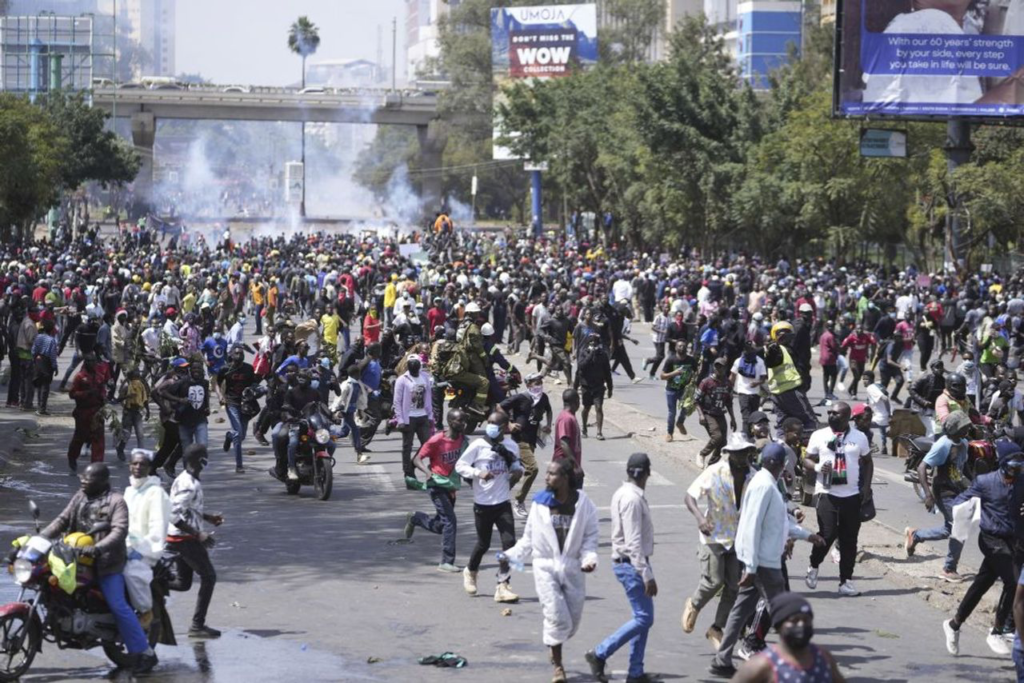
Ruto tactically withdrew the Finance Bill, but this concession only exposed the underlying conspiracy among the ruling class. In August, Raila Odinga’s Orange Democratic Movement (ODM)—which had postured as opposition—joined Ruto’s government5. The Central Organization of Trade Unions (COTU), led by Francis Atwoli, and influential Christian and Muslim clergy backed this coalition government. Austerity policies continue, the military has been deployed against civilian protesters for the first time in Kenyan history, and the country was designated a US “major non-NATO ally” by the Biden administration, positioning it as a proxy force in Washington’s preparations for war with China.
The subsequent strike wave by teachers, transport workers, healthcare staff, and civil servants demonstrated the potential for working-class power. Yet COTU and the Stalinist Communist Party Marxist-Kenya (CPM-K) worked tirelessly to prevent these strikes from becoming a political challenge to the regime, insisting instead on “no politics” and “leaderless” organization that left the field open for bourgeois forces6.
The uprisings in Nepal (September 2025) and the Philippines (September 2025) confirmed that this pattern extends across Asia. In Nepal, protests triggered by a government ban on 26 social media platforms and fueled by deep resentment over the lavish lifestyles of “nepo kids”—the children of politicians exposed through viral videos—left at least 51 dead. The homes of prominent politicians including former prime ministers were vandalized and set ablaze. Parliament was stormed and burned. Prime Minister K.P. Sharma Oli was forced to resign, but the outcome was a technocratic interim government headed by Karki, with the military playing a decisive role behind the scenes. As the WSWS reported, Chief of Army Staff Ashok Raj Sigdel “warned that the military would be forced to declare a state of emergency if no political solution would be found,” compelling party leaders to consent to parliament’s dissolution.
The Philippines saw its largest demonstrations in two decades, with 100,000 rallying in Manila on September 21—the 53rd anniversary of Ferdinand Marcos Sr.’s declaration of martial law7. The protests were triggered by exposures of massive graft in flood control infrastructure—involving billions stolen through kickbacks to officials and fraudulent contracts. Yet the political character of these protests was “markedly middle-class.” Stalinist organization BAYAN and the pseudo-left Akbayan party led separate rallies, both increasingly aligned with bourgeois factions hostile to China and integrated into Washington’s war preparations. President Marcos Jr. announced his support for the protests “as long as they were peaceful,” attempting to contain any genuine threat to its rule.
Madagascar (October 2025) demonstrated the pattern’s most dramatic expression, with President Andry Rajoelina forcibly removed and exfiltrated by French military aircraft. The uprising erupted in late September when chronic power and water shortages—leaving over 75 percent of the population subsisting on less than €0.80 per day outraged—triggered protests led by the Gen Z Mada formation. When authorities arrested two city politicians who had planned a demonstration on September 25, protests spread rapidly across the island. The regime responded with murderous repression: at least 22 killed, hundreds injured, a dusk-to-dawn curfew imposed, and the appointment of General Zafisambo as Prime Minister on October 6 in a desperate militarization that only deepened the crisis.
On October 14, the CAPSAT military unit—which had itself backed Rajoelina’s rise to power in 2009—toppled him through a coordinated intervention. Colonel Michael Randrianirina announced the dissolution of the Senate and High Constitutional Court while maintaining the National Assembly, providing constitutional veneer to what was fundamentally a coup. Most revealing was French imperialism’s direct role: on October 12, Rajoelina fled aboard a French aircraft in an operation coordinated with Paris and approved by President Emmanuel Macron. The company facilitating his escape, TOA Aviation, was the same that had enabled fugitive automotive boss Renault CEO Carlos Ghosn’s extralegal flight from Japan. Macron emphasized “constitutional order” without condemning repression, exposing France’s concern not for democracy but for protecting strategic interests in Malagasy energy, telecommunications, and rare earth minerals.
The Malagasy Trade Union Solidarity collective, comprising about fifty unions, called a general strike demanding Rajoelina’s resignation and wage increases after a freeze since 2022, while calling on the Church and local elites for “dialogue”. The opposition parties Tiako i Madagasikara (TIM) and Malagasy Miara-Miainga (MMM) positioned themselves as alternatives. This was essentially an opportunistic role, “channeling popular anger into the narrow framework of institutional negotiations while safeguarding the foundations of capitalism.”8 The military intervention aimed to defend bourgeois order and preserve the interests of imperialism and the national bourgeoisie, replicating the pattern observed in Egypt and Tunisia 2011 where “the supposed neutrality or support of the army served to defuse mobilization, restore bourgeois order, and ensure the continuity of the capitalist system under a new facade.”
Across all these movements, certain features recur with striking consistency: economic crisis driven by IMF austerity and capitalist breakdown, and chronic social inequality; massive youth and middle-class participation; violent state repression; the promotion of “leaderless” organization by pseudo-left groups; the systematic blocking of independent working-class political action by trade union bureaucracies and parties based on the petty-bourgeoisie; and outcomes that serve imperialist strategic interests while intensifying the exploitation of the masses.
To be continued…
- World Socialist Web Site, ‘Bangladeshi Prime Minister flees to India amid mass uprising’ (6 August 2024) ↩︎
- World Socialist Web Site, ‘Mass protests against Kenyan President Ruto’s IMF-dictated Finance Bill‘ (20 June 2024) ↩︎
- World Socialist Web Site, ‘Bangladesh’s right-wing interim government moves to consolidate its power, end popular ferment’ (23 August 2024) ↩︎
- World Socialist Web Site, ‘Kenya’s Gen Z insurgency, the strike wave and the struggle for Permanent Revolution – Part 1‘ (3 October 2024) ↩︎
- World Socialist Web Site, ‘One year since the Gen-Z Uprising in Kenya: The need for a socialist and internationalist strategy’ (24 June 2025) ↩︎
- World Socialist Web Site, ‘Ruto’s new Kenyan coalition government to reinstate rejected tax measures’ (21 August 2024) ↩︎
- World Socialist Web Site, ‘Major protests against corruption in the Philippines’ (21. September 2025) ↩︎
- World Socialist Web Site, ‘Madagascar president Rajoelina flees with French aid amid mass Gen Z protests’ (19 October 2025)
↩︎


